Welcome to my second investor update.
First off, thank you to everyone who read my first update.
Somehow it received 1,120 views—I’m not sure if Lauren opened it like 700 times or maybe my Grandma forwarded it to her church friends. Either way, the feedback was awesome.
In this update, we address the commonly-asked question: “What is Chris doing right now?”
I hope this update sparks some inter-family intellectual sparring about U.S. educational policy, entrepreneurship, and overseas talent. Pls enjoy (or not).
ASK: If you (or a loved one) are interested in incredible remote workers, I started an overseas talent consulting business and it’s growing super fast. Message me at hello@anavahtalent.com if you are interested (website still under construction).
Ground Rules: You will receive max 1 email per month. Reply with feedback. Unsubscribe if you want. Text me 424-903-9431 if you resonate.
- Chris Crump
2023 RECAP
Each January, Lauren and I do a ‘Reflection, Goals Roadmap and Relationship Evaluation’ session (here’s our framework if you are interested).
Last year, we postulated that I’d have a ‘chiller’ year since ‘2022 was about surviving.’
Well, we were very wrong—and I wouldn’t have it any other way.
Lauren told me, “This was the year you became a man.” (Not sure what Lauren considered me before this year, but I digress).
Sure, there were some highlights:
We both got a big promotion + raise (Mom, pls add another gold star on the sticker chart).
I learned how to build + manage a team of 18 (Thx Ed Feitzinger for the management 101 training).
We got engaged (And “we” secured the wedding venue 5-months before the surprise proposal).
We spent a lot of time in community (Thx MC group, pre-marriage group, Bain homies, ATX startups, etc.)
And some big learnings:
I learned how to stand up for myself and the people I care about (even when it means risking everything).
I learned how to navigate ambiguity and take things day-to-day (I often overcomplicate things).
I learned that my diet needs more protein (thx Dr. Kirby Taylor & Caleb Seegers).
And, I learned that the wedding industry is an incredible business (HOW DO THE FLOWERS COST SO MUCH MONEY???)
WHAT IS CHRIS DOING NOW
I left you hanging with the last update. To recap, I was accepted to an 8-week founder residency program (in Austin) through Antler VC (Singaporean early-stage venture capital firm).
My goal was to take a stab at entrepreneurship and build software to solve bottlenecks in the American childcare system.
It was an incredible experience to join a cohort of incredible entrepreneurs, learn from famous founders, and empathize with people in the same ambiguous stage.
I presented my weeks of research to the Antler Venture Partners and told them I was not pursuing their $250,000 check.
Why? Because the U.S. childcare space is too broken–software is not the answer.
They were super impressed. Loved the in-depth research (which you can find at the bottom section of this newsletter). Agreed with my findings. Appreciated my honestly. Told me that I’m the exact archetype of founder they want to fund and that they would open a separate Investment Committee in the future.

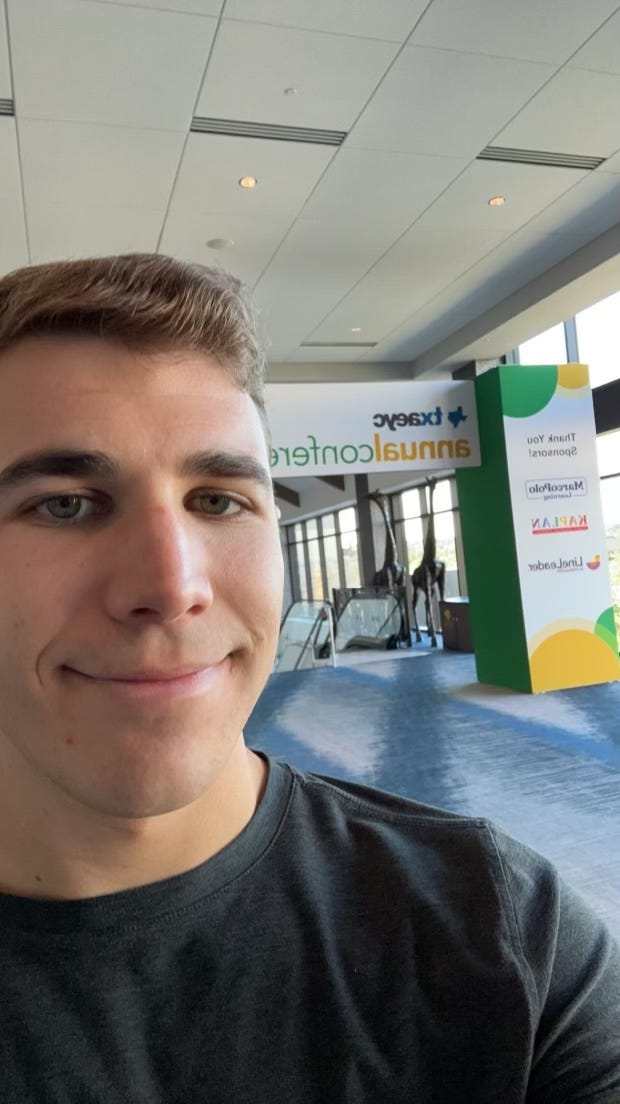
A DOOR CLOSES, A WINDOW OPENS
Cool story, right? Well, I still had no income.
Post-meeting, I’m driving home thinking “Well, God, what do I do now?”
I received several consulting offers and prayed for discernment.
That same week, three people asked me if I’d help them hire overseas talent in the Philippines. At my previous company, I built + managed a team in the Philippines—I’m quite familiar.
I told them how to hire, what to look for, and why they should do it. To my surprise, they offered me money and said “We will pay you to hire these people for us.”
I had a business—but I didn’t believe it.
CHRIS MEETS GIDEON
One night, we were doing a Bible study with some friends before hanging with the homeless (fentanyl addicts + unemployed Baylor and Cal students).
Our friend Jaime was teaching about Gideon, the Old Testament Jewish character who God chose to defeat the occupying Midianite army. Gideon was the weakest member of the weakest clan, but God chose him (Judges 6:1-40).
Naturally, Gideon could not believe it—so he asked God for signs. God gave him several rounds of signs—only after the third sign did he (reluctantly) believe it.
As we walked across the Congress Ave bridge, I told Jaime that I wasn’t sure what to do next.
He said something along the lines of “You want to be an entrepreneur. Three people are willing to pay you to solve the same problem. How many more signs do you need? You sound like Gideon!”
WE ARE IN BUSINESS
In 2022, I stepped on a sea urchin while visiting my team in the Philippines. While laughing at my $3.41 ER bill, I had a thought—growing a business is kinda like stepping on a sea urchin—it’s super painful.
I have always had a heart for business owners.
Small businesses [‘SMBs’] comprise 99% of U.S. companies, employing over 47% of Americans. But, it’s never been harder for SMBs to grow and compete in the global economy.
While at Goldman Sachs, I realized corporations have an unfair advantage—access to lower-cost skilled labor.
At my last startup, I helped build + manage a team of overseas workers in the Philippines. These in-house teammates owned customer service, product operations, and sales enablement—and they were fantastic.
Our customers loved the 24/7 service. Our internal operations were painless to manage. And, we never lost a single teammate—100% retention.
THE CHICKEN AND EGG PROBLEM
I see this problem daily—SMBs need money to hire employees, but customers need to see employees before they give them money.
I believe outsourced labor is the best lever for SMBs to scale operations and support overworked American employees.
Overseas talent can bless American businesses with their unique talents, strengths, and skills—and American businesses can bless overseas talent with life-changing, dignified opportunities.
Workers in the Philippines are highly skilled, proficient in English, trustworthy, and have deep experience working for U.S. companies.
THE FUTURE IS GLOBAL
But, hiring overseas talent can be confusing. And, who can give you an honest opinion?
Plus, most outsourcing firms are predatory for Filipino workers.
Their call centers are miserable and outsourcing firms take the majority of their hourly wage. Filipinos prefer working directly with reputable U.S. businesses—and they are incredible colleagues.
And, my teammates could afford a nice house, private school for their kids, and expensive technology because of their work with our company.
WELCOME TO ANAVAH TALENT
Welcome to Anavah Talent—a top headhunter agency for overseas talent. We help American businesses hire 10x talent for 10% the cost.
We take a consultative approach and our service is premium, trustworthy, and easy-to-use. We have deep operational expertise and overseas connections—we are a trusted advisory partner.
Plus, we help you hire directly—and we only get paid if you hire someone.
For example, we’ve placed CPAs for an accounting firm, an email marketing specialist for a marketing agency, and a virtual assistant for a restaurant group.
At Anavah Talent, we believe the following:
Inherent Value → We believe all humans are uniquely gifted and talented.
Dignity of Work → We believe all people should have access to dignified work opportunities.
Redemptive Entrepreneurship → We believe in the primacy of redemptive entrepreneurship—small businesses bless others, renew culture, and create value (not just capture value).
Global Connection → We believe the future of work is global and interconnected.
Empowerment → We believe remote work can empower communities (such as working mothers).
ASK: If you are looking to scale faster, improve operations, and support your American employees, and message me at hello@anavahtalent.com (website still under construction).

MY DEEP DIVE INTO THE U.S. CHILDCARE SYSTEM
When I joined the Antler VC Founder-in-Residence program, my goal was to dissect the American childcare system ($175B TAM) and build software to solve the bottleneck.
Thesis: Childcare providers have hundreds of painful admin tasks that are conducted on paper (enrollment, insurance, payments, staffing, etc.).
Goal: Build a vertical SaaS platform to automate backend tasks for childcare providers which saves time, money and resources so providers can spend more time with kids and increase enrollments.
Childcare is a massive TAM (Total Addressable Market)—and it’s radically underfunded.
But, Chris, childcare is so unsexy—can’t you build something in AI or Fintech?
RANT: Too many founders build a business on a product that doesn’t solve any meaningful problem. “Let’s build a product, slap on ‘AI’ and see if anyone wants it.”
ZIRP warped our view of startups by giving founders billions of dollars to build large companies that solved no real needs (enter Bird Scooters for example).
FIRST PRINCIPLES
Let’s start with first principles—businesses solve a problem. What is the core problem?
PROBLEM: U.S. childcare is broken—just look at the data.
Skyrocketing costs
2+ year waitlists
Daycares shutting down
But, what is the bottleneck?
CUSTOMER DISCOVERY
I had to investigate—so I entered customer discovery mode:
Cold-called 50 daycares in San Francisco (the owner of Dong Dong Daycare was very upset I bothered them during nap time).
Showed up and toured 15 daycares in Austin (pretended to be a new Dad—these places have no security).
Met with dozens of childcare experts (including the Singaporean Ministry of Education).
Interviewed with all major daycare franchises (including some SBA lenders) as a potential daycare franchisee.
Posed as a buyer for underperforming daycares (turns out, these places sell for just the dirt).
Went to the TX Early Childhood Educators conference (never bought a pass—pretended to be an investor, which was pretty easy to pull off since I was the only dude there).
BOTTLENECK:
TLDR: The problem is daycare capacity—there are not enough open daycare slots.
Daycares have 2+ year waitlists—it’s clearly not a demand issue. It’s a supply issue.
But, why is daycare capacity so low?
Daycares have state-mandated minimum staff ratios and they cannot operate without a certain number of staff.
Daycares can’t afford overhead (insurance, materials, wages, debt-service costs) so they can’t pay their staff.
A significant portion of daycare staff have left due to low wages.
Daycares are severely understaffed.
When staff leave, capacity drops proportionally (or they operate illegally) and daycares are forced to reduce capacity to maintain state staffing ratios.
Daycares lose more valuable revenue.
More staff leave.
Daycare waitlists grow.
It’s a vicious cycle.
But, why don’t daycares raise prices?
Daycare tuition is inelastic up until a certain point where it becomes 100% elastic. Parents will not pay more for daycare than one parent’s salary. So there’s a max you can charge.
DAYCARE CAPACITY
So, if I want to make a dent in this problem I need to solve daycare capacity—and probably open a daycare.
Problem: I’m not licensed and it's hard to open a daycare.
I’m failing to see how software solves the problem. Does automating the admin tasks, reducing paperwork, and building beautiful products solve the root cause?
I could build some awesome vertical SaaS or automate all these processes but I wouldn’t be solving the problem from first principles. Daycare owners don't have enough money to pay for staff—let alone expensive software!
Opening more daycares solves the problem.
POTENTIAL SOLUTIONS:
Corporate-hosted childcare (office-buildings have extra space; staffing ratios are improved parents are technically “on-site”)
Foreign au-pairs and nannies (changing immigration code and minimum wage laws)
License-exempt childcares (6 or less kids = no state license needed, can also be located in your home)
Governments backstopping the childcare industry (subsidies, grants, tax breaks, etc.).
Change in immigration (more au-pairs, more qualified foreign childcare workers, etc.)
OTHER DEVELOPED COUNTRIES
Other countries have solved these problems—America has not.
Many foreign governments view childcare as a ‘societal good’ and everyone financially chips in to help you raise your kid.
Here are some examples:
Government subsidies like Canada (childcare is $10/day) or Singapore (childcare is $300/month)
Singapore realized early childhood education helps balance society, so they built a rigorous early childhood standardization program that also supports educators (they also help all new parents acclimate to parenthood).
Most middle-class families in places like Hong Kong, Singapore and India have 1-3 live-in helpers who handle childcare, food preparation, and cleaning (These helpers are from the Philippines and work for $1000/month).
CONCLUSION
Until U.S. childcare regulations, the immigration / labor market, and government subsidies (or lack thereof) change, childcare in America will continue to be in crisis.






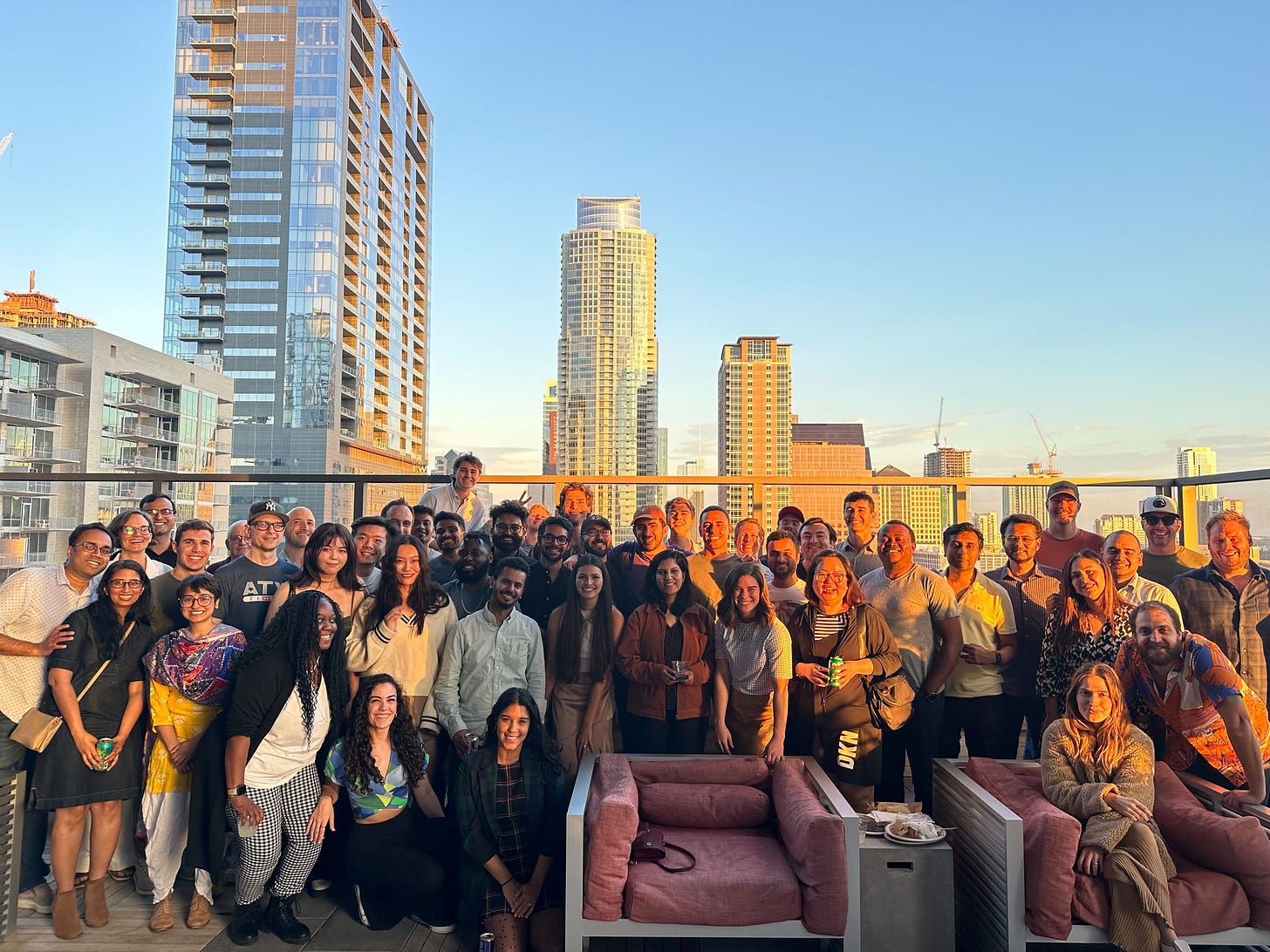
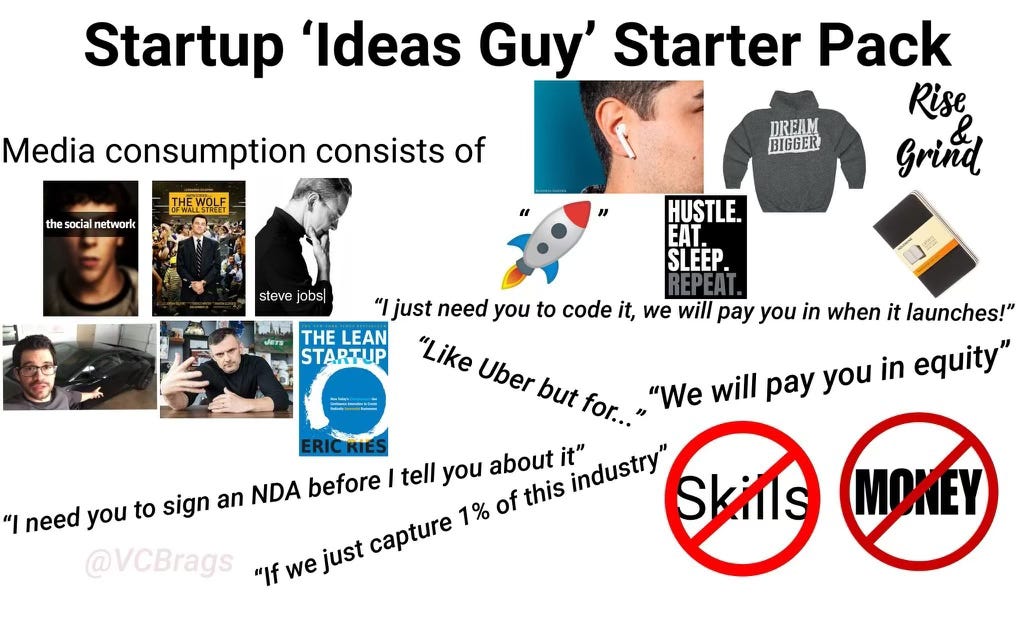
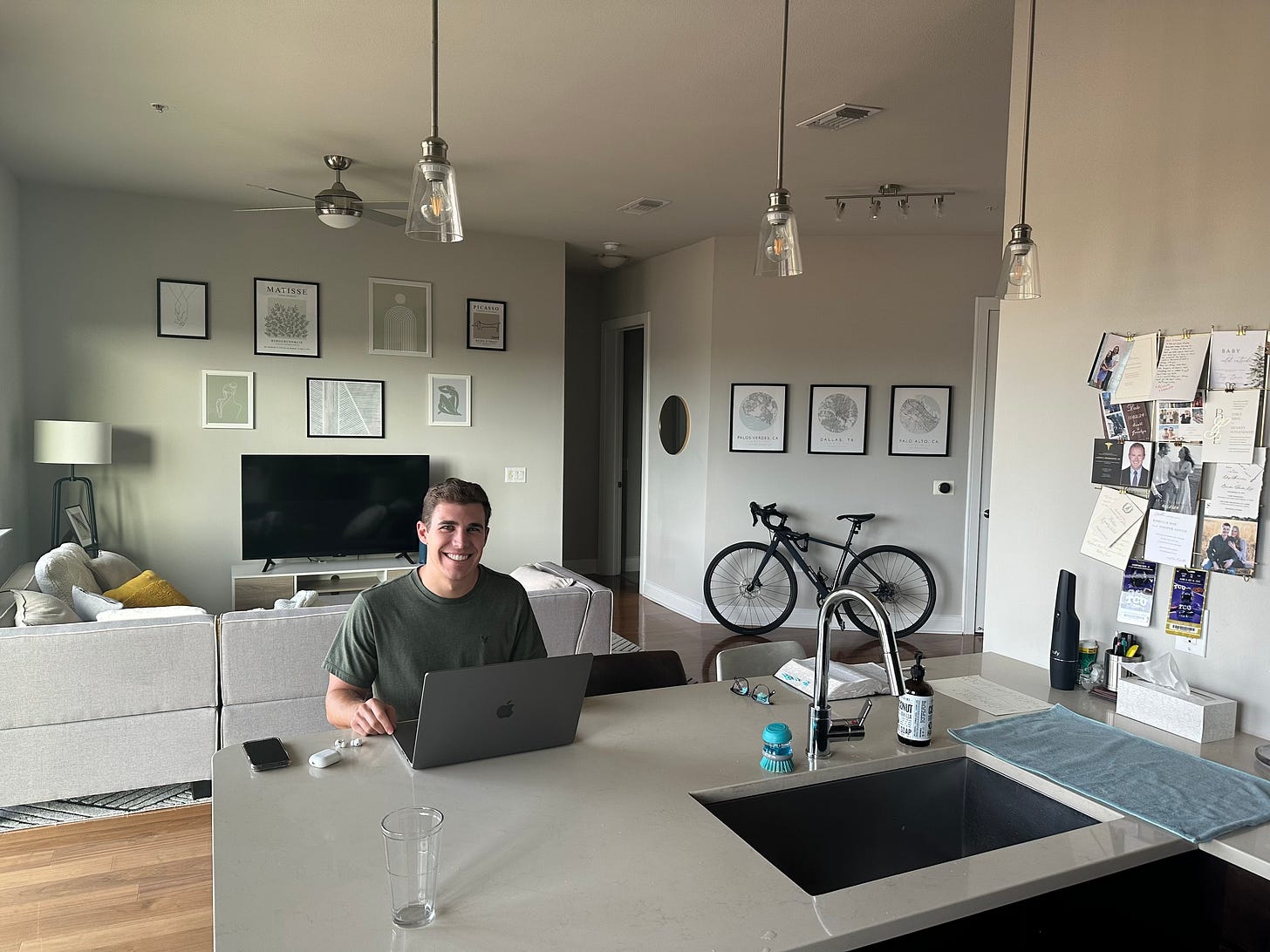
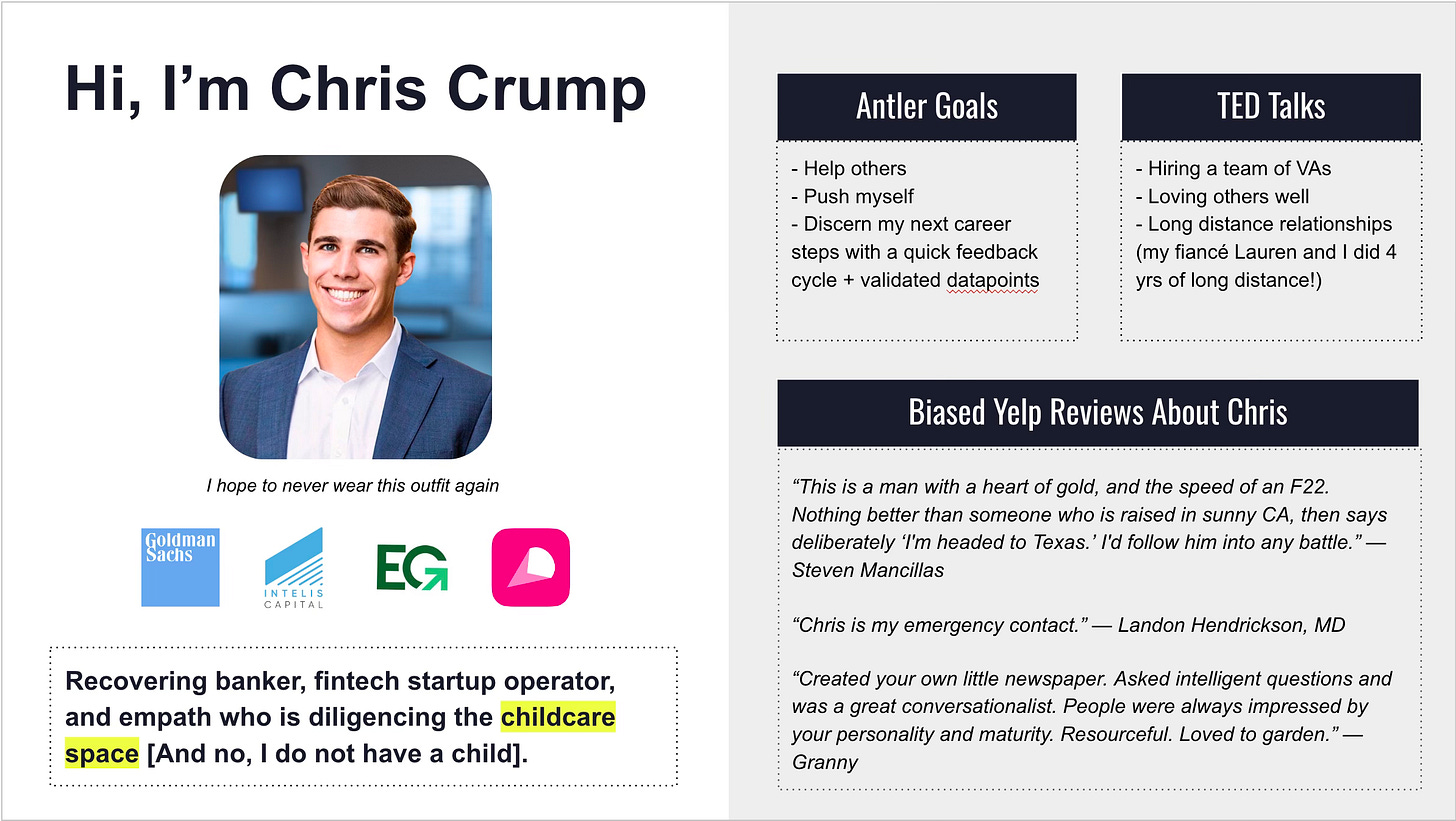
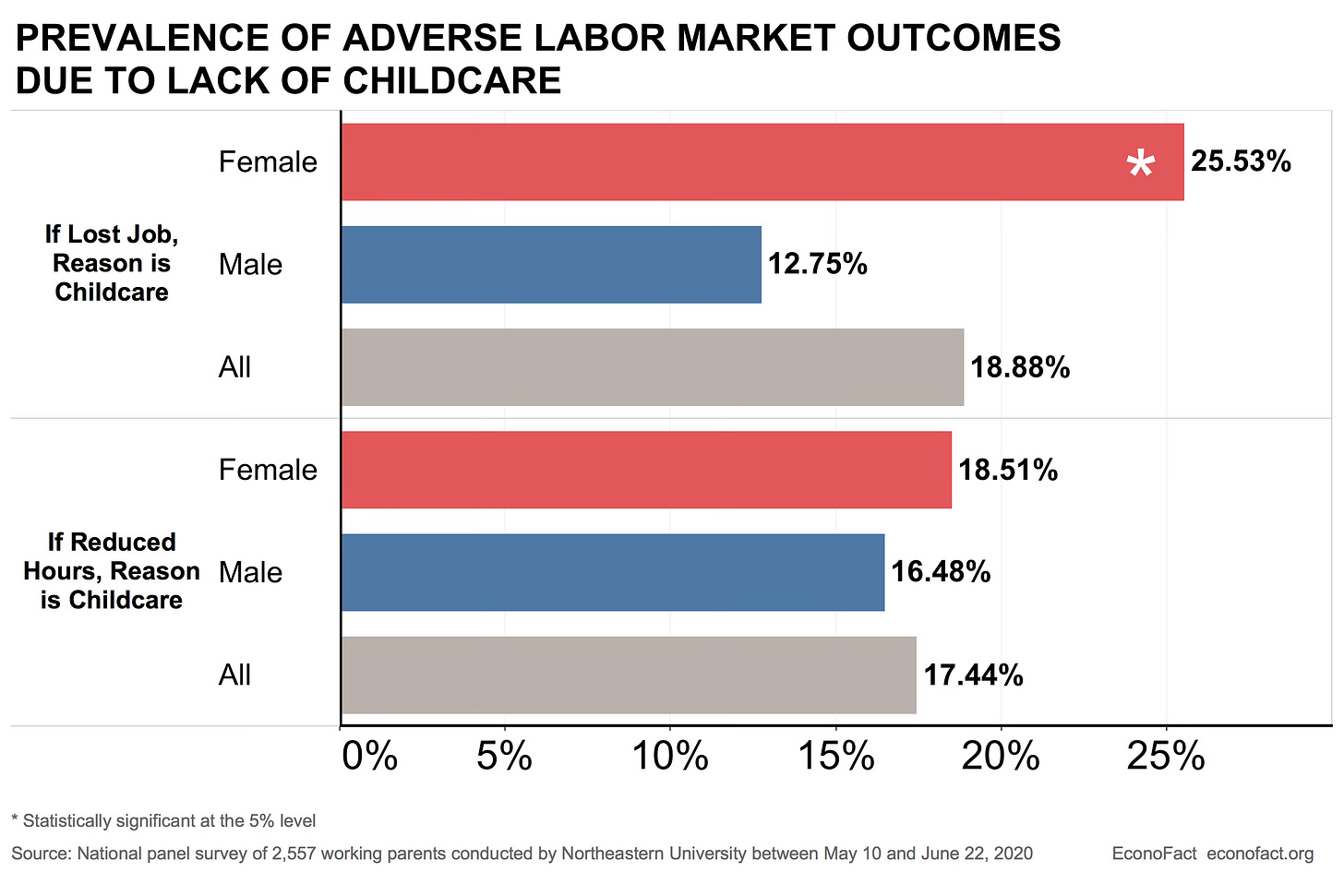
Another great read. Glad to know you are doing so well.
Let's go Chris, Go Anavah!